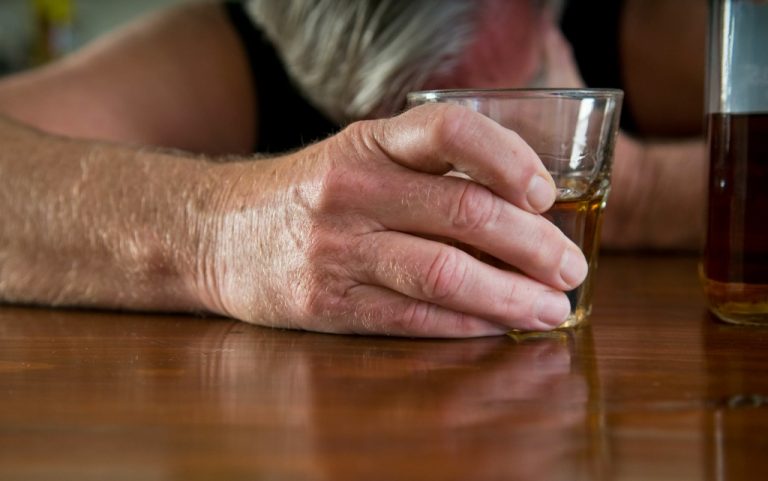The threats are based on emotional and moral attitudes towards the existence of the SIS and drug addicts generally, as opposed to empirical evidence (Des Jarlais, Arasteh, and Hagan 2008). Thus, a youngster may show a deficit in the interpersonal skills domain as a psychological influence, or may demonstrate competence in interpersonal skills that may reduce vulnerability for depression. In https://esenin.ru/bibliografiia/1980-g/zarubezhnye-izdaniia a similar vein, personality may enhance psychological resilience or act as a factor that exacerbates biological or social–environmental events. Likewise, biological competence may provide a protective factor for adverse or stressful major life events. The biopsychosocial model provides a general framework for investigating the many factors affecting sport injury rehabilitation outcomes.
How Might Drug Use or the Addictive Process Influence Brain Structure and Function?
Following the recent changes to the diagnostic category for addictive disorders in DSM-5, it is urgent to clarify what constitutes behavioural addiction to have a clear direction for future research and classification. However, in the years following the release of DSM-5, an expanding body of research has increasingly classified engagement in a wide range of common behaviours and leisure activities as possible behavioural addiction. If this expansion does not end, both the relevance and the credibility of the field of addictive disorders might be questioned, which may prompt a dismissive appraisal of the new DSM-5 subcategory for behavioural addiction. We propose an operational definition of behavioural addiction together with a number of exclusion criteria, to avoid pathologizing common behaviours and provide a common ground for further research. The definition and its exclusion criteria are clarified and justified by illustrating how these address a number of theoretical and methodological shortcomings that result from existing conceptualizations.
Behavioral Medicine
Similar to the model of reciprocal determinism postulated by Bandura (1978) for understanding human behavior, the biopsychosocial prospective (described below) considers reciprocal pathways. The strength of these pathways in the pathogenesis, maintenance, or exacerbation of depression or depressive disorders may vary as function of developmental https://manwb.ru/news2/1257/ level, individual strengths and deficits within each domain, nature of the reciprocal interactions, and the nature of the depressive outcome. An improved understanding of genetic factors or related endophenotypes might help identify individuals with vulnerability factors that could be targeted preventively for interventions.

Biopsychosocial Model
- Rather, it may be that the content and emotions that constitute the clinician’s relationship with the patient are the fundamental principles of biopsychosocial-oriented clinical practice, which then inform the manner in which the physician exercises his or her power.
- Therefore, addiction in neurosis and perversion may be understood as overindulgence in the hedonic properties of drug-taking behaviors in an attempt to avoid acknowledging, and effectively dealing with, frustration.
- This convention allows a systematic study of the condition, and of whether group members benefit from a specific intervention.
- For instance, using a validated diagnostic interview and trained interviewers, the Collaborative Studies on Genetics of Alcoholism examined the likelihood that an individual diagnosed with a lifetime history of substance dependence would retain this classification after 5 years.
Meyer’s integrated approach to psychiatry, which he called psychobiology (Meyer, 1957), was also interactive, in that psychiatric illness was viewed as an interaction (or reaction) between the psychobiological and life stressors. Likewise, the biobehavioral model of depression proposed by Akiskal (1979) is consistent with this perspective and integrates biological, psychosocial, developmental, and environmental stressors as a basis for the development of depression. Factors related to culture, race and ethnicity also warrant consideration in the propensity to develop addictions. Differences in genetic compositions may vary according to race and in part explain differences observed in rates of addictions across racial and ethnic groups [138, 139]. Environmental factors related to differences in acculturation, cultural expectations, socioeconomics, stress exposure and other domains also warrant consideration as these might differ across cultural groups [137, 140]. As such, disentangling the precise contributions to addictions amongst different racial/ethnic groups is both an important and complex undertaking.
Recognizing the limitations of the biopsychosocial model.
Thus the claim that “an addict cannot be a fully free autonomous agent” (Caplan 2008, p.1919) is debatable. Because of a tendency to focus on extreme pathological states, the wide range of normal is often forgotten. An individual living with an addiction is in-the-world-with-others and thus acts as a being-among-others, such that the individual’s decisions and complex engagement with the world may not be as automatic as the neurophilosophical model may suggest (Gillett 2008a, 2008b, 2009).

First, he describes a “weak” rights ethic, wherein individuals have the right to access good healthcare. Based on this definition, we believe that HAT falls into both camps HAT seeks to promote the right to access good health care, and the basic right as an individual asserting sovereignty over his or her body to inject heroin. Addictions research using heroin-assisted treatment (HAT) trials such as the North American Opiate Medication Initiative (NAOMI) and similar HAT studies and programs in Europe are a striking, if not controversial example of an effort to embody a biopsychosocial systems approach. The objective of these trials is to investigate the benefits and risks of administering medically supervised, pharmaceutical-grade injectable heroin to chronic opiate users where other treatment options, such as methadone maintenance therapy, have failed. Notions of a pathologized self, deeply enmeshed with personal identity, may lead an individual to internally negotiate a relationship between the self and the brain (Dumit 2003). It may further challenge understandings of “accepted” identities, such as health seeking and rational, as opposed to “contested” identities, such as addict, intoxicated, and at-risk (Fry 2008).
3 Biopsychosocial Plus Model
Accordingly, the social environment can increase the frequency of cravings, which may contribute to increased drug consumption, and thus increase the probability that affected individuals will participate in a series of habituated behaviours that facilitate using (Levy 2007b). Since typical problems older adults face are multimodal, a comprehensive interprofessional approach to assessment and treatment that encompasses diverse health care providers (e.g., geriatricians, nurses, social workers) as well as psychologists is usually needed. The biopsychosocial model combines clinical and scientific approaches to treatment by defining problems in relation to the interactions among biological, social, and psychological systems. This model captures the complexity inherent in addressing the problems of older adults and highlights the need for an interprofessional approach (Zeiss and Steffen 1998). A number of cognitive and behavioral processes are particularly relevant to the understanding of the development of depression.
- As such, holistic treatment alternatives targeting these factors in both the child and the mother have been recommended (Neger & Prinz, 2015; Suchman, Mayes, Conti, Slade & Rounsaville, 2004).
- Considering recent findings suggesting the neurobiological overlap of addiction and attachment, it may be possible to integrate both perspectives into a developmental model through the lens of attachment.
- The social burden of illicit drug addiction is estimated at billions of dollars per year (Fisher, Oviedo-Joekes, Blanken, et al. 2007).
An overview of psychological theories and models in the area of addiction would not be complete without the inclusion of psychodynamic formulations. The psychodynamic umbrella covers a range of viewpoints or schools of thought, from the psychoanalytical school and analytical psychotherapy to transactional analysis. Risky (hazardous) substance use refers to quantity/frequency indicators of consumption; SUD refers to individuals who meet criteria for a DSM-5 diagnosis (mild, moderate, https://ativanx.com/2019/07/04/finding-parallels-between-and-life-4/ or severe); and addiction refers to individuals who exhibit persistent difficulties with self-regulation of drug consumption. Among high-risk individuals, a subgroup will meet criteria for SUD and, among those who have an SUD, a further subgroup would be considered to be addicted to the drug. However, the boundary for addiction is intentionally blurred to reflect that the dividing line for defining addiction within the category of SUD remains an open empirical question.

Amongst adolescents, both structural volumetric and white matter changes have been observed in association with one to two years of drinking alcohol, particularly with respect to binge-pattern drinking [105]. Both gray matter and white matter integrity are important to brain function, with the latter particularly relevant to how brain regions connect and therefore operate in conjunction with one another. Alcohol’s influences on gray and white matter structures may explain in part differences seen in performance on cognitive tests in groups of individuals with different addictions [106, 107]. Upon this framework it is important to consider developmental changes in brain structure and function that occur naturally as people age [9, 55, 56]. For example, in rats, exposure to alcohol during adolescence increases risky or impulsive decision-making in adulthood [108].
